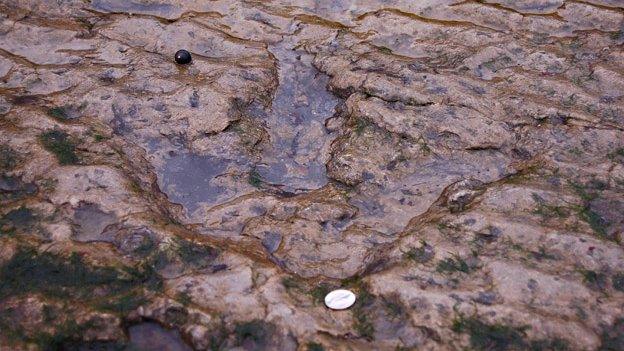Researchers discover 'dinosaur stomping ground' on Skye
- Published
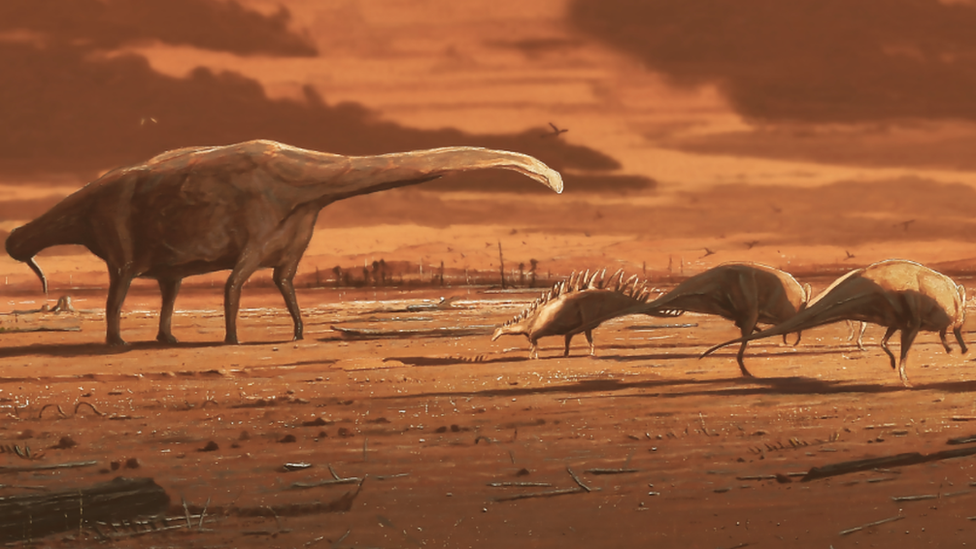
An artists' impression of how the dinosaurs might have looked on Skye
Researchers from Edinburgh university have discovered a new dinosaur "stomping ground" on Skye.
They have found dozens of fossil footprints which expand the list of dinosaurs known to have lived in the area.
They say it reveals a thriving ecosystem in the Middle Jurassic period 170 million years ago.
It includes at least one type of dinosaur that has never been found there before.
Palaeontologist Paige dePolo and her colleagues discovered two sites with about 50 footprints on what had been ancient coastal mudflats.
She said: "The new tracksites help us get a better sense of the variety of dinosaurs that lived near the coast of Skye during the Middle Jurassic than what we can glean from the island's body fossil record."
The footprints included a type called Deltapodus - the first time they have been found on Skye, most likely created by a stegosaurian dinosaur.
Stegosauri are readily identified by dinofans young and old as the big ones with the diamond shaped plates sticking out of their backs
The largest ones could grow to almost 30ft long and weigh more than six tonnes.
The one that left its marks on Skye was smaller, possibly a youngster.
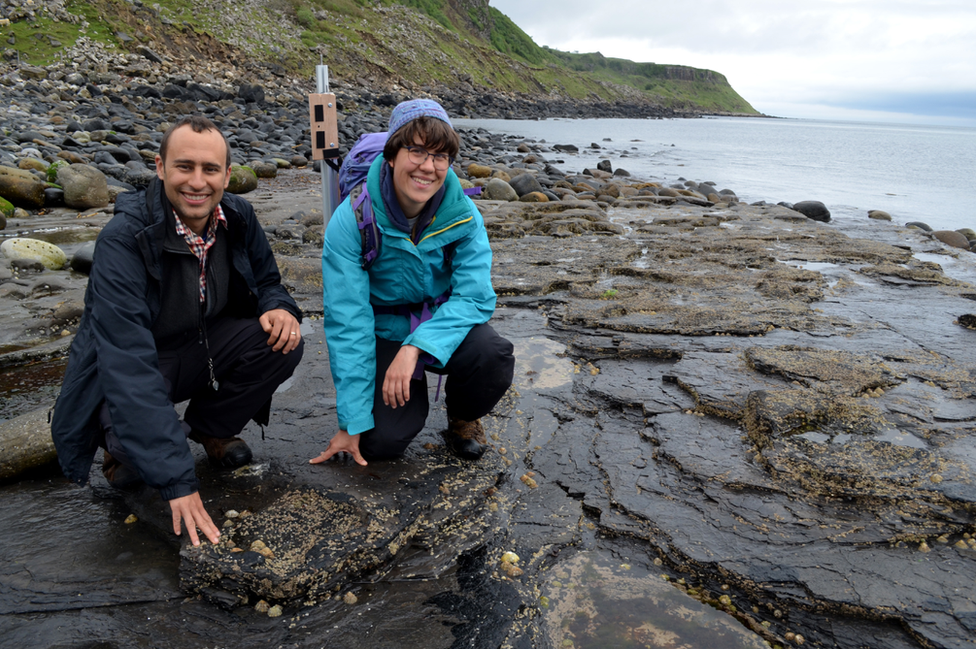
Dr Steve Brusatte and Paige dePolo co-authored the research for Edinburgh University
The team also found three-toed footprints from several different sizes of early carnivorous theropods and a series of other big tracks that could be some of the earliest evidence of large-bodied ornithopod (bird footed) dinosaurs.
The discovery means the site at Brothers' Point (Rubha nam Brathairean) on the northeast coast of the island is a key site for understanding the Middle Jurassic period.
This was a time when many dinosaur groups evolved and diversified rapidly but fossils from the period are relatively rare.
Skye is the exception, but it wasn't Skye back then. The mudflat lay on the edge of a shallow lagoon on a long lost island in what is now the Atlantic Ocean.
World leading
The co-author of the research, Dr Steven Brusatte, said the new tracks give us a much clearer picture of the dinosaurs that lived in Scotland 170 million years ago.
He added: "We knew there were giant long-necked sauropods and Jeep-sized carnivores, but we can now add plate-backed stegosaurs to that roster, and maybe even primitive cousins of the duck-billed dinosaurs too.
"These discoveries are making Skye one of the best places in the world for understanding dinosaur evolution in the Middle Jurassic."
The team say it also underlines the importance of revisiting sites that have been explored before.
Brothers' Point area has long been popular with fossil prospectors but the trackways were only recently uncovered by a storm.

One of the dinosaur footprints on Skye next to a camera lens cap to illustrate its size
Skye is one of the few places in the world were fossils from the Middle Jurassic period can be found.
The island has provided vital clues about the early evolution of major dinosaur groups. They include huge long-necked sauropods and fierce meat-eating cousins of Tyrannosaurus rex.
The researchers used drones to capture images and produce 3D renderings of the footprints.
Writing in the journal PLOS One, external, they say both paleontological science and tourism stand to benefit.
Monsters' ball
The study was supported by a grant from the National Geographic Society and involved scientists from National Museums Scotland, Glasgow University, the Federal University of Rio de Janeiro, and the Staffin Museum on Skye.
Paige dePolo's work was supported by the Association of Women Geoscientists.
It is tempting to speculate what all the stomping was about.
The prosaic reality is that the dinosaurs were getting on with doing what dinosaurs did: eating, making new generations of dinosaurs, that sort of thing.
But for those of us with more vivid imaginations it might call to mind a dinosaur ceilidh or a monsters' ball.
- Published2 August 2019
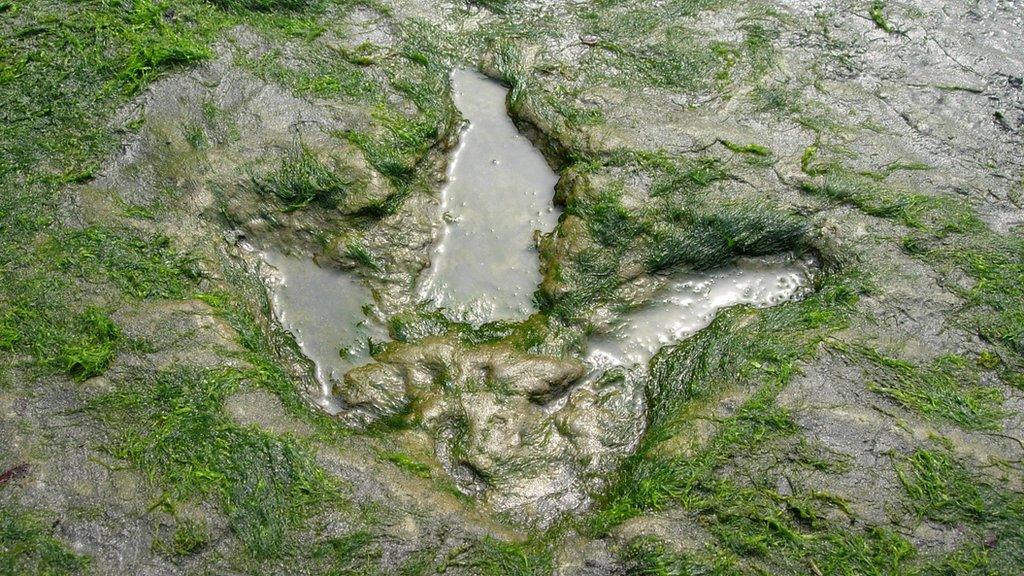
- Published25 July 2019
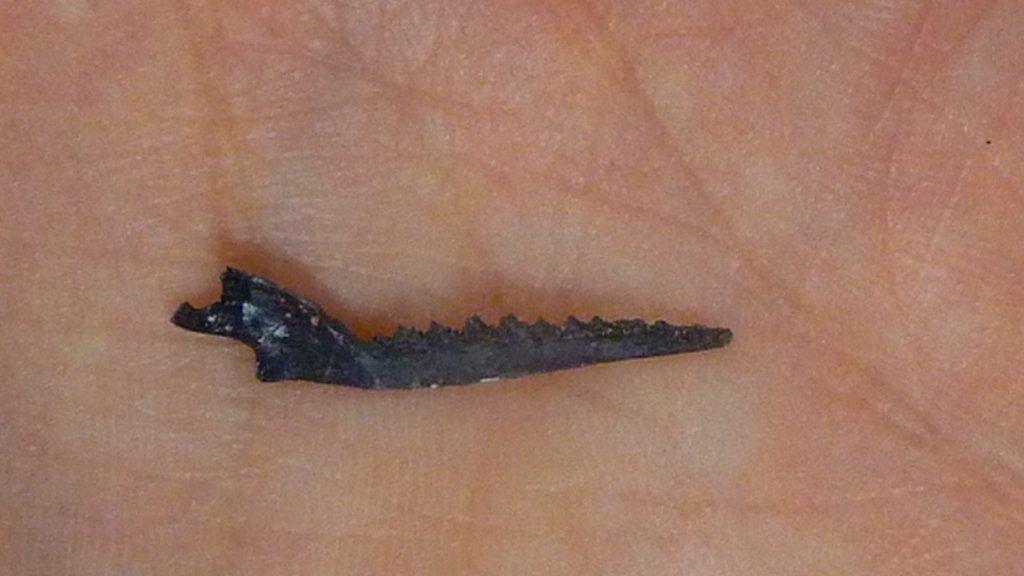
- Published3 April 2018
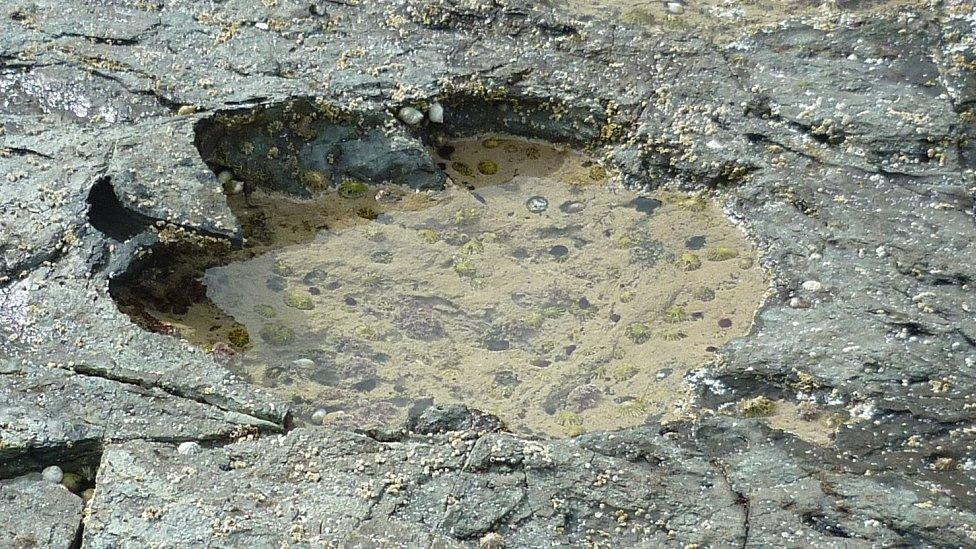
- Published29 December 2016
